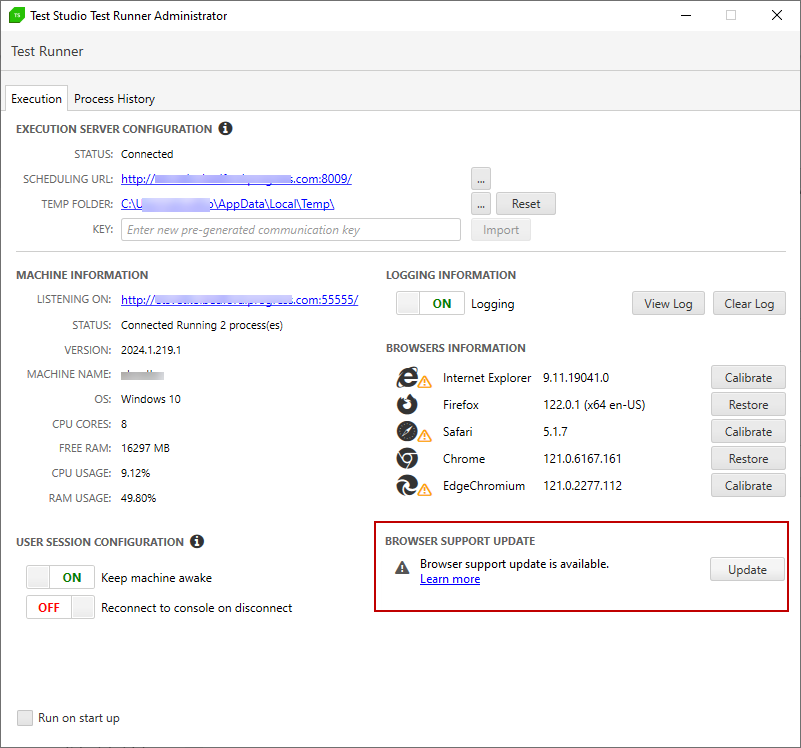Test Studio Test Runner in CI Builds
The Test Studio Execution Client is the Run-time component of Test Studio. It gets installed with the Test Studio Standalone and the Run-time editions. Part of its options are also applicable when running UI tests from a CI build pipeline.
This article guides you through the configuration of the Test Studio Execution Client when used in CI environment.
- Start the Execution Client
- Run on Startup
- User Session Configuration
- Use Test Studio Application Log
- Browsers Information
- Browser Support Update
Start the Execution Client
To start the Execution Client, called also Test Studio Test Runner, type in the Windows Start Menu > Start Execution Server.
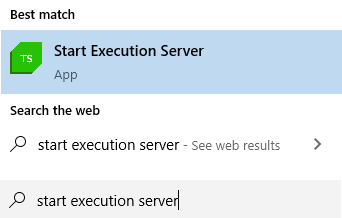
Message 'Test Runner is already running'
The Execution client is running in the background. Thus if the runner is already started (for example automatically on machine startup; or automatically with a test project; or under another user session) and you try starting it again you get prompted with a message that The Test Runner is already running.
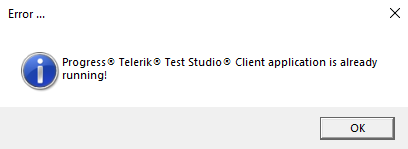
In this case you can access it from the Windows Task Bar on the lower right corner - locate the Test Studio icon, right click on it and choose the Show option.

Note
If the Test Runner is started under another user session you need to stop its process and start it again under the current user session.
Run on Startup
The configuration of the Test Studio Test Runner requires admin rights and is performed through the Test Studio Services config wizard. Use the Configure button to open the wizard showing its Execution server tab and apply any necessary changes.
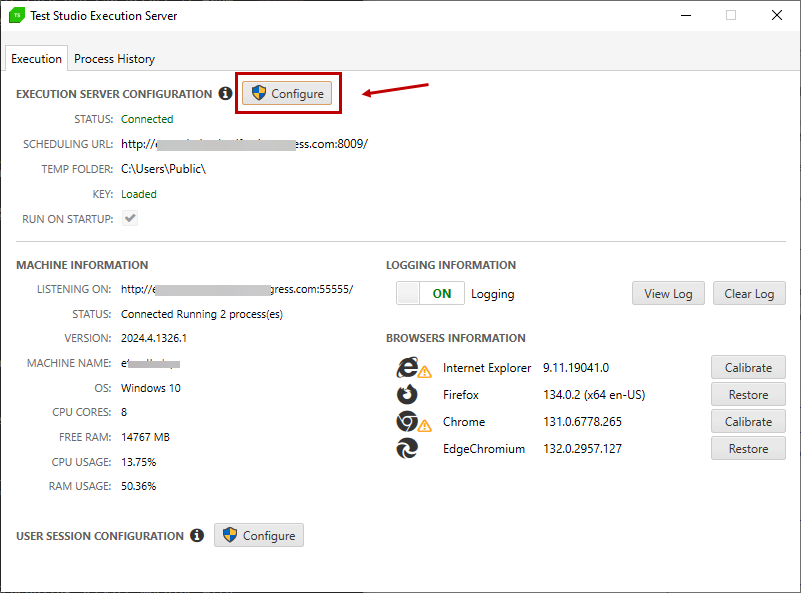
The option which is applicable in this setup is the Run on start up and it allows you to set the Test Runner to be started automatically on machine startup. Hit the Apply button to reflect any changes in the configuration.

User Session Configuration
Test Studio requires active user session for executing functional UI tests such as automated tests for WPF and desktop application, and web tests executed in headful browser mode.
To help in covering this requirement Test Studio provides a separate application which is dedicated to keep the machine awake and with active user session. The application is called Test Studio Session Monitor and you can start it as follows:
-
From the Windows start menu by typing Session Monitor.
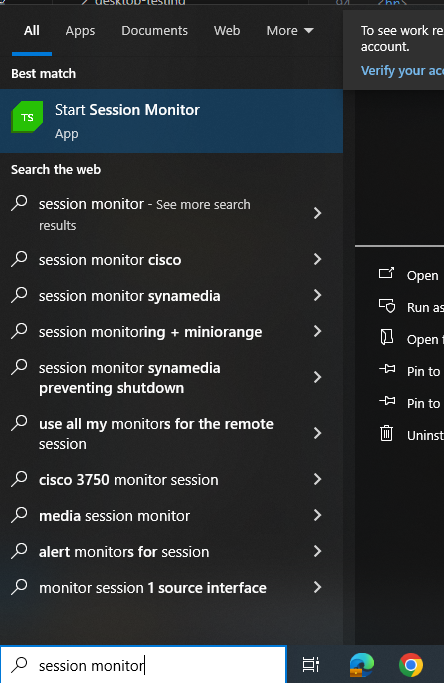
From the Test Studio Test Runner by clicking the Configure button in the User Session Configuration section.
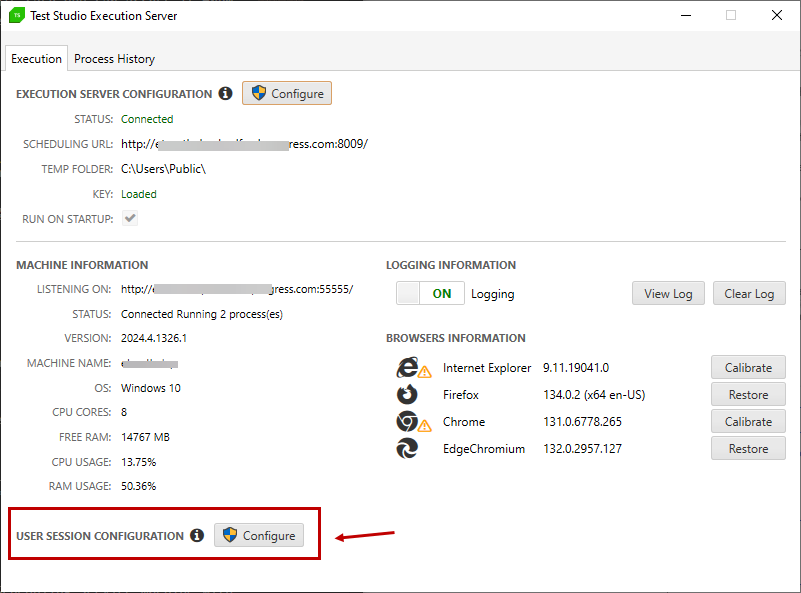
Note!
Running and configuring the separate application Test Studio Session Monitor requires admin rights.

- Keep Machine Awake
- Reconnect to Console on Disconnect
- Change Console Resolution
- Run Session Monitor app on machine startup
Keep Machine Awake
With this option enabled and as long as the Test Studio Scheduling Client process is running, it prevents the machine from falling to sleep, locking or showing screen saver.
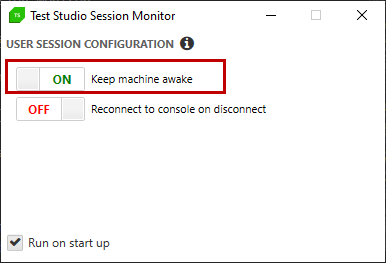
Note!
This functionality does not prevent the user to manually lock the machine or put it to sleep.
Note!
Using this functionality is a potential risk as it prevents the machine from locking when expected by your security policies. Consider if leaving the test machine unlocked for prolonged periods is acceptable for your organization before using the feature (especially when using Test Studio on your local physical machine).
Once the option is disabled or the Test Studio Scheduling Client process is stopped, the operating system is able to get to sleep/lock normally.
Reconnect to Console on Disconnect
When running tests on a remote virtual or physical machine, users would usually connect to that machine via Remote Desktop Connection (RDC) to start and configure the Test Studio Scheduling Client. If after that the user closes their RDC window, their user session on the virtual machine is switched to 'disconnected' state and lose access to the graphical user interface (GUI). This prevents UI tests to be executed normally, whenever an interaction to the GUI is needed (e.g. performing real mouse click or keyboard actions, dialog interaction, etc.).
When the 'Reconnect to Console on Disconnect' feature is enabled, Test Studio tries to reconnect your disconnected session to the local console session, regaining access to the GUI.

Note!
In the case when there is a physical monitor attached to the Execution machine, the reconnected console session gets displayed on it.
That means if there is another user who has physical access to the machine, they will be able to view the screen or interact with it. Therefore consider carefully if that is acceptable for your organization before using the feature.
Note!
If you keep the Remote Desktop Connection session open but minimized, the local console session isn't reconnected.
If you need to run tests in minimized RDP window you can try modifying the Terminal Server Client registry keys as suggested.
Change Console Resolution
When the 'Reconnect to Console on Disconnect' feature is enabled, you have the option to change the Console session resolution - you can choose the desired resolution from the dropdown menu. This option is useful when tests are executed on remote machine and successful test run depends on particular screen resolution. When set through the Test Studio Runner, you can ensure the automated tests are executed on the specified resolution.
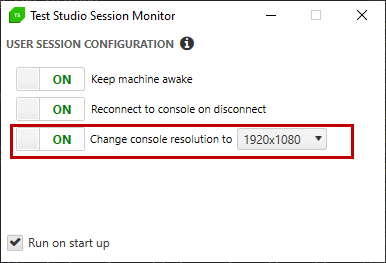
Run Session Monitor App on Startup
The Run on start up option allows you to decide whether the Test Studio Session Monitor starts automatically on machine startup. We recommend using the option if this is the tool you use to control the user session.
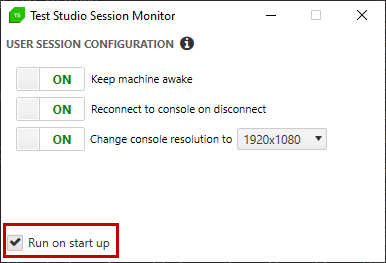
Use Test Studio Application Log
You can access the logging of the Execution Server - enable, disable or view the generated log.
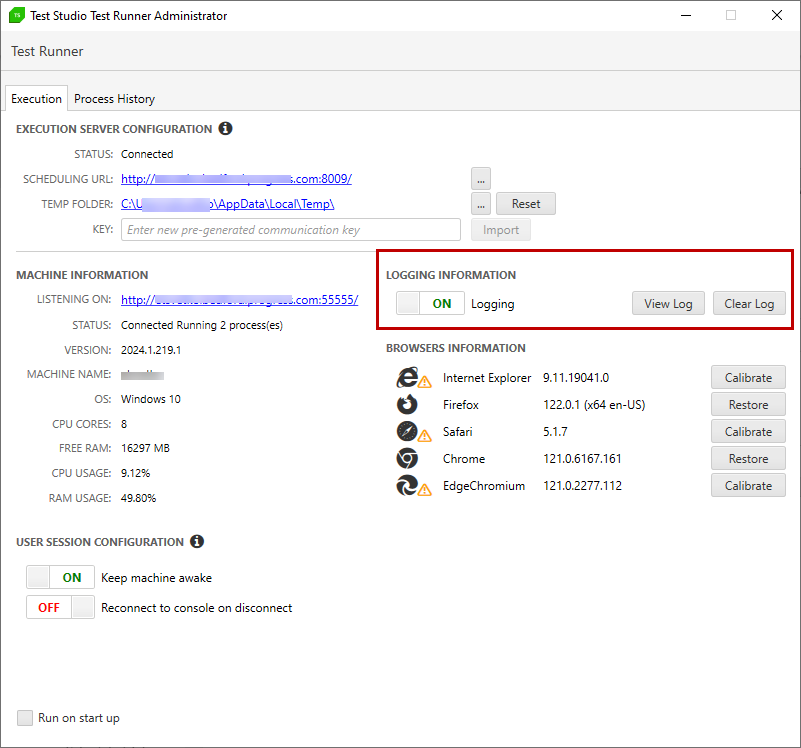
Browsers Information
All available and supported browsers on the Execution Server are listed in this section. You can calibrate these or restore their default settings. If using the legacy version of Edge, you can browse here the WebDriver folder location on disc.
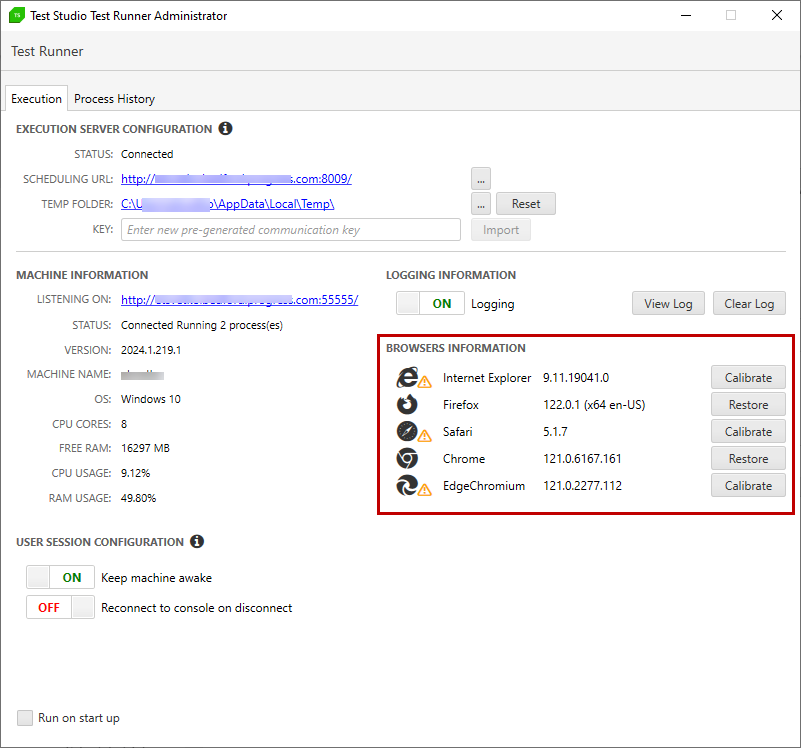
Browser Support Update
This section appears only if there is an update for latest browser versions and allows you to update these with a single button click.
